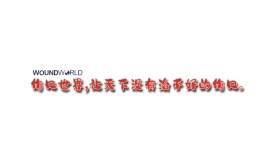文献精选
Luxmi Dhoonmoon
It is important for clinicians to understand the implications of skin tone in diabetic foot ulcers as it can influence various aspects of wound care, including early detection, assessment, management and overall outcomes. Greater awareness and education in dark skin tones is needed and the purpose of this article is to give clinicians the confidence, knowledge and skills required to care for patients with both dark skin tones and diabetic foot.
Citation: Dhoonmoon L (2023) The relevance of skin tones in the diabetic foot. The Diabetic Foot Journal 26(1): 16–9
Key words
- Dark skin tone
- Diabetic Foot
- Foot care
Article points
1. Incorrect use of assessment tools in people with dark skin tones has to led to discrepancies in wound care.
2. A validated classification tool, such as the skin tone tool, needs to be used to determine an individual’s skin tone at baseline.
3. It is easy to miss erythema in patients with dark skin tones, so clinicians should make full use of the senses and assess for cardinal signs other than redness.
4. Clinicians need to use inclusive, person-first language, and they shouldn’t be afraid to ask if they are unsure of something.
Authors
Luxmi Dhoonmoon is Tissue Viability Nurse Consultant, London North West University Healthcare NHS Trust, UK
Krishna Gohil and Helen Milnes
In May 2023, the International Working Group on the Diabetic Foot (IWGDF) updated the offloading guidelines to support surgical offloading interventions. The evidence for digital tenotomy of the flexor tendon is strong, with the desirable effects reported to be moderate. This case study describes a patient with a 5-year history of apical toe ulcerations and a history of apical osteomyelitis, which were healed within 2 weeks following digital tenotomies performed in an outpatient setting. Considering the new offloading guideline, we must consider how clinicians can optimise patient care and offer this valuable treatment option to patients.
Citation: Gohil K, Milnes H (2023) The power of the digital flexor tenotomy: a case study. The Diabetic Foot Journal 26(1): 6–10
Key words
- Diabetes Related foot ulceration
- Digital flexor tenotomy
- Healing
- Surgical offloading
- WIfI
Article points
1. The International Working Group on the Diabetic Foot 2023 guidelines support digital flexor tenotomies in individuals with diabetes and callus to prevent development of ulceration or recurrent foot ulceration.
2. The cost of flexor tenotomies is low in comparison to ongoing dressings, ongoing antibiotics and potential hospital admission for infection management
3. Surgical offloading should be considered when conservative non-operative treatments have been unsuccessful.
Authors
Krishna Gohil is Senior Lecturer Podiatry/Prescribing, University of Northampton, UK; Helen Milnes is Consultant Podiatric Surgeon, University Hosptital Birmingham, UK
Helen O’Neil
Diabetic neuropathy is one of the most prevalent chronic complications in people living with diabetes and painful diabetic neuropathy is difficult to manage clinically. Guidelines recommend offering a choice of amitriptyline, duloxetine, gabapentin or pregabalin as initial treatment for neuropathic pain. It is recommended that pharmacotherapy is offered in a stepwise approach to ensure tolerability and effectiveness of individual medications. Patients often do not respond to monotherapy and, therefore, combination pharmacotherapy may be required. The aim of treatment is to improve quality of life for patients living with painful diabetic neuropathy by reducing pain and promoting increased participation in all aspects of daily living.
Citation: O’Neil (2023) Pharmacological treatment of painful neuropathy in adults with diabetes. The Diabetic Foot Journal 26(1): 20–3
Key words
- Diabetic neuroarthropathy
- Neuropathic pain
- Pharmacological therapy
Article points
1. Painful diabetic neuropathy is common in people with diabetes and is difficult to manage clinically.
2. Guidelines recommend amitriptyline, duloxetine, gabapentin or pregabalin as initial pain management options.
3. Patients often do not respond to monotherapy, so combination pharmacotherapy may be required.
Author
Helen O’Neil is Senior Medicines Optimisation Pharmacist, South Tyneside and Sunderland NHS Foundation Trust, UK
Gillian Harkin
Differential diagnosis between active Charcot neuroarthropathy and infection in the presence of neuropathic ulceration presents a significant challenge to the clinician. Both conditions may present as a red, hot, swollen foot with an absence of pain. Although additional tests may aid in developing a clear diagnosis these can be invasive (blood testing), carry exposure to ionising radiation (X-ray) or be difficult to access rapidly (MRI). The following case study demonstrates how infrared thermography may prove useful within the clinical environment as a diagnostic test as well as a useful educational tool to guide treatment planning in collaboration with an individual with diabetes.
Citation: Harkin G (2023) Imaging in osteomyelitis and Charcot neuroarthropathy: can infrared thermography aid in diagnosis?. The Diabetic Foot Journal 26(1): 24–8
Key words
- Charcot neuroarthropathy
- Differential diagnosis
- Osteomyelitis
- Thermal imaging
- Ulceration
Article points
1. It can be difficult to differentiate between Charcot neuroarthropathy and osteomyelitis due to similar clinical presentations.
2. Thermal images can be used to inform discussions as part of realistic medicine
3. Thermal imaging may be helpful in identifying the origin of heat within the foot, aiding diagnosis.
Author
Gillian Harkin is Lead Clinical Podiatrist. NHS Greater Glasgow & Clyde, Glasgow, UK.




